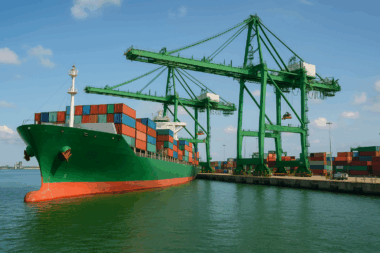In recent years, the transportation sector has been undergoing a significant shift towards sustainability, driven by the need to mitigate climate change and reduce reliance on fossil fuels. Hydrogen-powered trains have emerged as a promising solution for achieving zero-emission rail transportation, offering an environmentally friendly alternative to traditional diesel-powered locomotives.
The Rise of Hydrogen Fuel Cell Trains: Pioneering Sustainable Rail Transportation
In response to the pressing need for eco-friendly transportation solutions, hydrogen fuel cell trains have emerged as a pioneering technology in the realm of rail transportation. These innovative trains represent a crucial step towards achieving zero-emission mobility and reducing the carbon footprint of the transportation sector. The rise of hydrogen fuel cell trains marks a significant shift towards cleaner and more sustainable rail travel, offering a promising alternative to conventional diesel-powered locomotives.
Evolution of Hydrogen Fuel Cell Trains
The development of hydrogen fuel cell trains has gained traction in recent years, propelled by advancements in fuel cell technology, growing environmental awareness, and policy initiatives aimed at reducing greenhouse gas emissions. As governments and rail operators seek to transition towards greener transportation options, hydrogen fuel cell trains have emerged as a key solution for decarbonizing the rail sector. The increasing availability of renewable hydrogen, coupled with improvements in fuel cell efficiency and durability, has paved the way for the widespread adoption of hydrogen-powered trains on rail networks worldwide.
How Hydrogen-Powered Trains Work: Harnessing Clean Energy for Propulsion
At the heart of hydrogen-powered trains lies the principle of fuel cell technology, which enables the conversion of hydrogen gas into electricity through electrochemical reactions. Unlike traditional diesel engines that rely on combustion, fuel cells generate electricity with high efficiency and minimal environmental impact. In a hydrogen fuel cell train, hydrogen gas stored onboard is supplied to the fuel cell stack, where it reacts with oxygen from the air to produce electricity. This electricity powers electric traction motors, which drive the train’s wheels and propel it forward. The only by-products of this process are water vapor and heat, making hydrogen fuel cell trains a clean and sustainable mode of transportation.
Key Components of Hydrogen Fuel Cell Trains: Engineering the Future of Rail Travel
Fuel Cell Stack: The core component of a hydrogen fuel cell train is the fuel cell stack, which comprises multiple individual fuel cells arranged in a series. Each fuel cell consists of an anode, a cathode, and an electrolyte membrane. Hydrogen gas is supplied to the anode, where it undergoes a chemical reaction that releases electrons. These electrons flow through an external circuit, generating electric current to power the train’s motors. At the cathode, oxygen from the air combines with electrons and hydrogen ions to form water vapor, the only emission produced by the fuel cell.
Hydrogen Storage System: Hydrogen fuel cell trains store hydrogen gas onboard in high-pressure tanks or cryogenic tanks. These storage systems must be designed to safely store and release hydrogen gas as needed for fuel cell operation. The development of advanced hydrogen storage technologies is essential for optimizing the efficiency and range of hydrogen-powered trains.
Electric Traction Motors: Hydrogen-powered trains are equipped with electric traction motors connected to the wheels or axles. These motors convert electrical energy from the fuel cells into mechanical energy, propelling the train forward with zero emissions. The design and integration of efficient traction motors are critical for ensuring smooth acceleration, braking, and overall performance of hydrogen fuel cell trains.
Power Electronics and Control Systems: An onboard power electronics system regulates the flow of electricity between the fuel cell stack, traction motors, and auxiliary systems on the train. This system manages energy distribution, voltage levels, and power conversion to optimize overall efficiency and performance. Additionally, sophisticated control algorithms ensure seamless operation and safety of hydrogen fuel cell trains under varying operating conditions.
Hardware Required:
Fuel Cell Stack: This is the primary hardware component responsible for converting hydrogen fuel into electricity through electrochemical reactions. It consists of multiple individual fuel cells arranged in a stack configuration.
Hydrogen Storage System: High-pressure tanks or cryogenic tanks are used to store hydrogen gas onboard the train. These storage systems must be designed to safely store and release hydrogen gas as needed for fuel cell operation.
Electric Traction Motors: Hydrogen-powered trains are equipped with electric traction motors that drive the wheels or axles. These motors convert electrical energy from the fuel cells into mechanical energy to propel the train forward.
Power Electronics and Control Systems: Hardware components such as power converters, inverters, and control units are essential for regulating the flow of electricity between the fuel cell stack, traction motors, and auxiliary systems on the train. These systems manage energy distribution, voltage levels, and power conversion to optimize overall efficiency and performance.
Hydrogen Refueling Infrastructure: Infrastructure for hydrogen refueling stations is necessary to support the operation of hydrogen fuel cell trains. This includes hydrogen production facilities, storage tanks, dispensers, and safety systems for handling and storing hydrogen gas.
Safety Systems: Various safety systems and sensors are required to monitor hydrogen storage, fuel cell operation, and other critical parameters to ensure safe operation and mitigate potential risks associated with hydrogen fuel.
Software Required:
Control Software: Software algorithms are used to control the operation of the fuel cell stack, traction motors, and other onboard systems. These control algorithms optimize energy management, regulate power flow, and ensure smooth operation of the train under varying operating conditions.
Diagnostic Software: Diagnostic software tools are used for monitoring the health and performance of fuel cell components, identifying potential faults or anomalies, and facilitating maintenance and troubleshooting activities.
Data Analysis and Reporting Software: Software applications for analyzing operational data, generating performance reports, and optimizing train operations based on real-time data insights. These tools help operators track fuel efficiency, energy consumption, and overall system performance.
Simulation Software: Simulation tools are used for modeling and simulating the behavior of hydrogen fuel cell trains under different operating scenarios. These simulations help engineers optimize system design, validate control algorithms, and predict performance under various conditions.
Communication Systems: Software for communication and data exchange between onboard systems, onboard computers, and remote monitoring centers. These communication systems enable real-time monitoring, remote diagnostics, and fleet management for hydrogen fuel cell trains.
Safety and Emergency Response Software: Software applications for managing safety protocols, emergency procedures, and incident response in the event of hydrogen-related accidents or incidents. These systems help ensure the safety of passengers, crew, and the surrounding environment.
Advantages of Hydrogen-Powered Trains
Zero Emissions: Hydrogen fuel cell trains produce zero emissions during operation, making them environmentally friendly and compliant with stringent air quality standards.
Long Range: Hydrogen-powered trains have a longer range compared to battery-electric trains, as they can carry larger quantities of hydrogen fuel onboard without the need for frequent recharging.
Quick Refueling: Refueling hydrogen fuel cell trains is faster than recharging batteries, allowing for rapid turnaround times between trips and uninterrupted service.
Versatility: Hydrogen fuel cell trains can operate on existing rail infrastructure without the need for costly electrification projects, making them a flexible solution for both urban and rural rail networks.
Challenges and Considerations
Infrastructure: The widespread adoption of hydrogen-powered trains requires the development of hydrogen refueling infrastructure, including production, storage, and distribution facilities. Building this infrastructure entails significant upfront investment and coordination between public and private stakeholders.
Cost: Hydrogen fuel cell trains are currently more expensive to manufacture and operate than diesel-powered trains. However, as technology advances and production scales up, costs are expected to decrease, making hydrogen trains more economically viable in the long term.
Safety: Hydrogen is highly flammable and requires careful handling to prevent accidents. Safety protocols and standards must be established to ensure the safe storage, transportation, and use of hydrogen fuel for rail applications.
Supply Chain: The availability of hydrogen fuel depends on the development of renewable hydrogen production methods, such as electrolysis powered by renewable energy sources. Ensuring a reliable and sustainable supply chain for hydrogen is essential for the widespread adoption of hydrogen-powered trains.
Applications and Deployment
Hydrogen-powered trains have the potential to revolutionize rail transportation in various regions, particularly those with abundant renewable energy resources and ambitious climate targets. Countries like Germany, Japan, and the United Kingdom have already begun testing and deploying hydrogen fuel cell trains on their rail networks as part of efforts to decarbonize their transportation sectors. These trains are being used for commuter services, regional routes, and even long-distance travel, showcasing the versatility and potential of hydrogen as a clean energy carrier for rail transportation.
Hydrogen-powered trains represent a promising solution for achieving zero-emission rail transportation and reducing the environmental footprint of the transportation sector. With advancements in fuel cell technology, infrastructure development, and policy support, hydrogen fuel cell trains have the potential to play a significant role in the transition towards sustainable and low-carbon mobility. By harnessing the power of hydrogen, rail operators can offer passengers clean, efficient, and environmentally friendly transportation options while contributing to global efforts to combat climate change.



